Making Learning Relevant to Students’ Lives and Communities
Key Points
-
Through CommunityShare, students collaborated with university faculty and community professionals on a year-long project using geospatial technology to map green infrastructure, comparing their neighborhoods to others in Tucson.
-
Community-engaged learning experiences bridge multiple grade levels, programs, and disciplines, creating vibrant and inclusive educational ecosystems that support student well-being and inspire them to thrive.
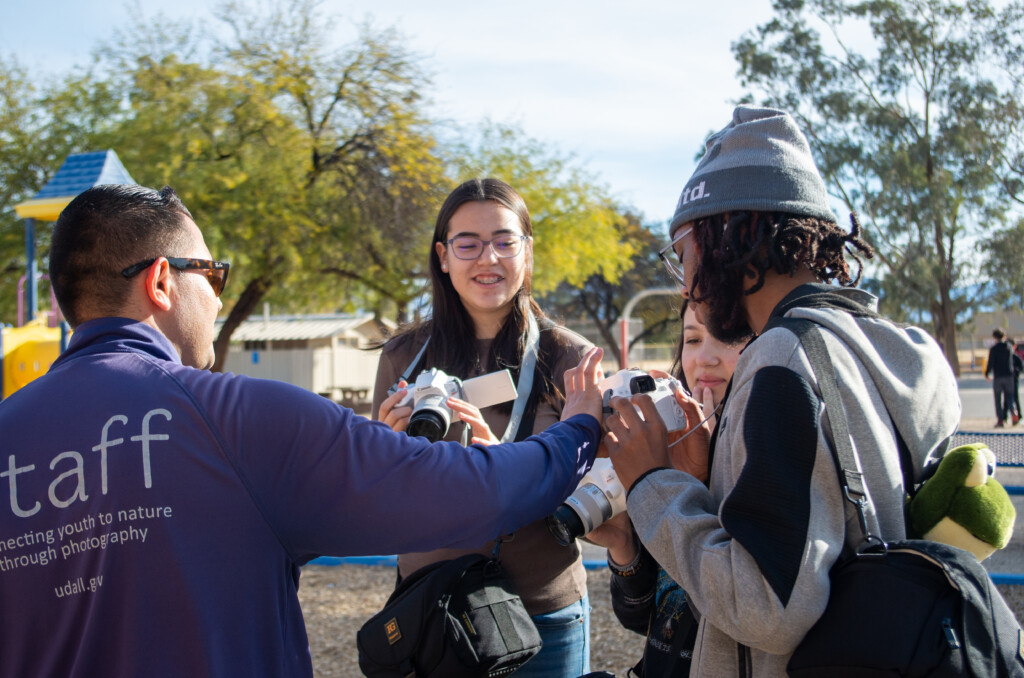
By Josh Schachter and Melinda Englert
When 80 middle school students from Billy L. Lauffer Middle School, a Title I school in southeast Tucson, hopped off the bus at the University of Arizona, it was not for an ordinary field trip. Despite living just 10 miles away, for many students, this was their first time stepping foot on the university campus – connecting with professors and students and getting a glimpse of college life.
The visit was part of an innovative project designed to ignite curiosity, create access to real-world STEM learning experiences, and reveal higher education pathways for students in Sunnyside Unified School District. “I teach in a Title I district – 95% of my students are members of the BIPOC community. Many of my students’ families don’t have scientists, researchers, or engineers in them – yet. One of my goals has been to shift that picture,” shared Jackie Nichols, their middle school teacher.
Wanting to bring professionals with STEM experiences into her classroom, Nichols reached out to CommunityShare, a nonprofit organization working to weave thriving learning ecosystems by connecting students and educators with the knowledge, experience, and wisdom living in local communities. CommunityShare’s digital platform serves as a “human library,” connecting PreK-12 students and educators to community partners to co-create real-world, community-engaged learning experiences. Through CommunityShare, Nichols found and connected with Adriana Zuniga-Teran, assistant professor at the University of Arizona School of Geography, Development and Environment. Nichols also recruited her colleagues – fellow middle school teachers Keona Hunter and Emily Fimbres – to collaborate and engage their students in the project.

Throughout the year-long project, students were engaged in learning beyond the walls of the classroom by bringing their passion, talents, and knowledge to address inequities in their neighborhood. With mentorship from Zuninga-Teran, faculty colleagues, and their undergraduate and graduate students, these middle school students learned how to utilize geospatial technology to map and analyze green infrastructure at the University of Arizona campus. They then applied the technology to their lived experience by surveying, mapping, and comparing access to green infrastructure and parks in their south Tucson neighborhood with neighborhoods in higher socioeconomic regions of Tucson. Through CommunityShare, Nichols also connected with Ernesto Somoza, a photographer with the Parks in the Focus program, who supported the students in using photography and GIS data software to document green infrastructure resources.
At the core of the project was multi-generational mentoring. University faculty mentored graduate students and undergraduates, who mentored high school mentors, who in turn mentored middle schoolers. This approach allows students to learn from peers just a few steps ahead in their educational journey, making the learning process relatable, accessible, and inspirational.
By building connections with mentors of color, students have had a valuable opportunity to see themselves reflected in these professions, as Nichols highlights: “My goal is to close the representation gap for girls and Hispanic youth in STEM fields. CommunityShare mentors help my students see themselves in those professions.”
Herein lies the transformative power of community-engaged learning: it sparks engagement, brings cultural relevance and life to classroom content, and offers all participants the opportunity to serve both as teachers and learners, while actively contributing to their communities. This approach transcends traditional educational boundaries, fostering a dynamic, intergenerational, and inclusive journey for all participants.
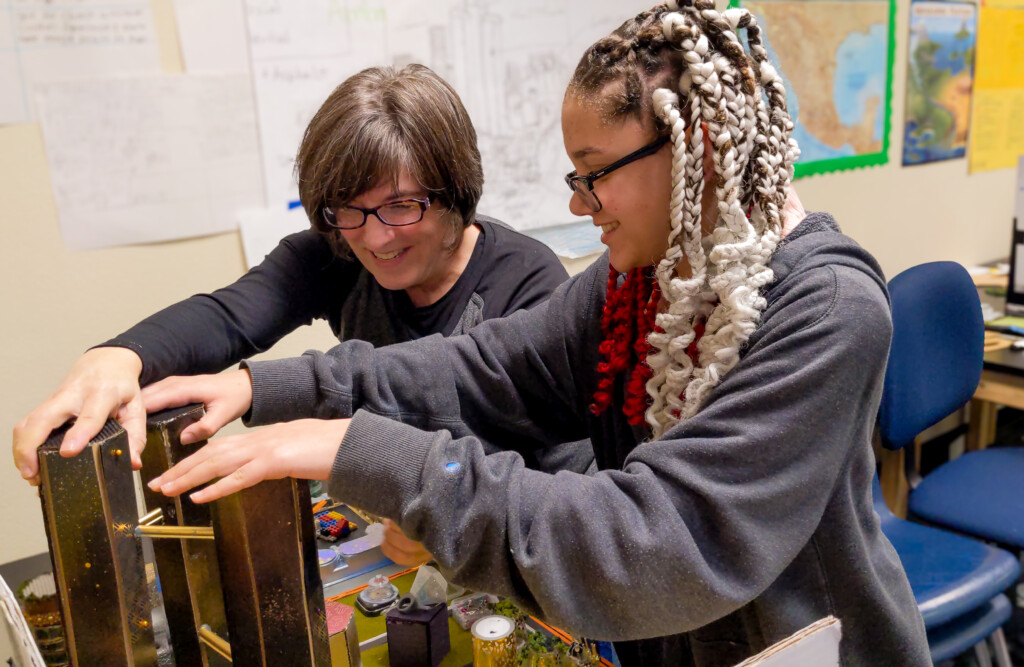
In conjunction with the green infrastructure mapping project, Nichols’ middle school students engaged in another sustainability project, researching and building 3-D models of future cities powered by renewable energy 100 years from now. Through CommunityShare, Nichols connected with artist Sarah Howard, who mentored the students as they sketched their city designs. High school students, who had previously built their own future cities as middle schoolers in Nichols’ class, returned to mentor their younger peers. The high school students earned a stipend for their time and wisdom, many of whom contributed over 100 hours in support of the middle school students. The project culminated in a statewide competition and awards presentation at the University of Arizona.
“Being a STEM mentor this year has shown me how my journey and experience can positively influence, guide, and bring out the best in students. Seeing the impact I’ve had has given me a new perspective of what community and togetherness means,” shared Jenavieve, a Desert View High School student.
After hearing about Nichols’ projects through CommunityShare, Kristina Valencia, an elementary school teacher, connected with Nichols and her middle school students, who mentored Valencia’s elementary students in building their own invention prototypes. “The kids were thinking very creatively and outside the box. It was really good for their self-esteem,” shared Valencia.
As this work exemplifies, community-engaged learning can happen across multiple grade levels, programs, and disciplines. It bridges STEM and the arts, Career and Technical Education (CTE) and project-based learning, and career and college readiness. This approach thrives at the intersections, where disciplines meet, inspiring the kind of creativity, adaptability, and innovation young minds need to meet the challenges of tomorrow.
These community-engaged learning experiences transform student lives well beyond high school. Lexana, a former student of Nichols, recently shared, “I used to think that engineering, science, and research were for smart people, and then I discovered that I’m smart people.” Lexana is now studying engineering at Arizona State University on a full-ride scholarship.
Addressing educational equity requires a departure from decontextualized, siloed interventions to learning that transcends zipcodes and reimagines the role of our communities and schools. Imagine what would be possible if we were to grow vibrant regional ecosystems capable of evolving in diverse, robust, and even sometimes unexpected directions. When we recognize and steward education as a broader ecosystem – rich with connections – the possibilities are limitless.
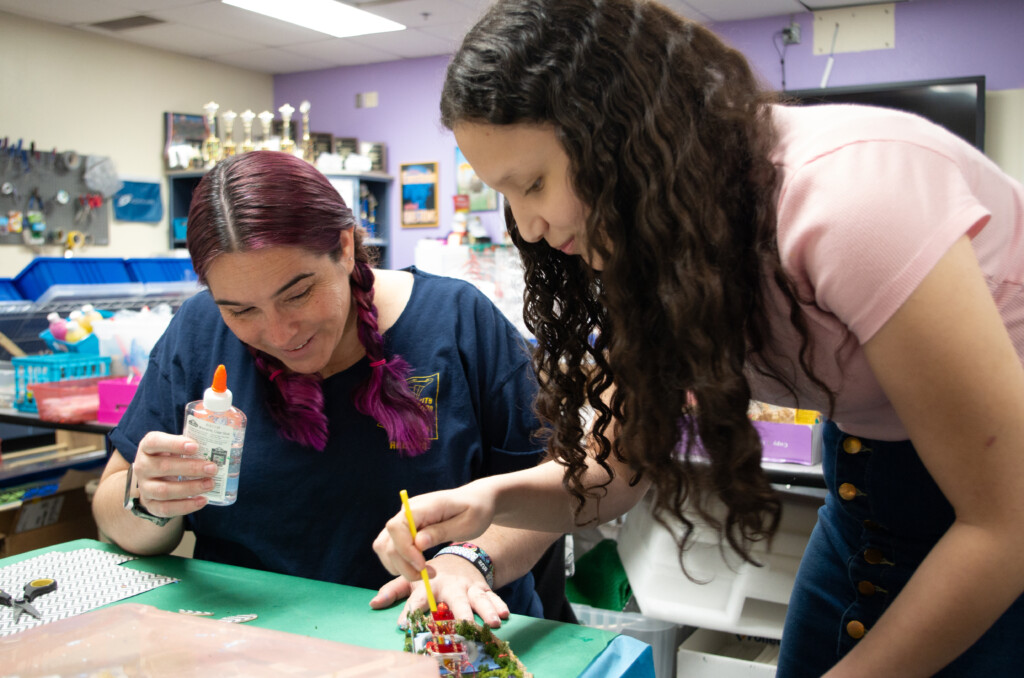
What role can you play in growing your regional learning ecosystem? If you are looking to grow a culture and practice of community-engaged learning in your community, here are a few ideas to consider:
1. Shifting Mindsets: Shifting from siloed interventions to weaving learning experiences across disciplines, grade levels, places, people, and programs. How might businesses engaged in your CTE program support project-based learning in elementary and middle schools? What role could families and parents play in bringing culturally relevant learning and real-world context?
2. Leveraging Local Resources: Seeing and mapping social, cultural, creative, financial, and intellectual capital within our local and regional communities. How might you engage alumni, artists, college students, city and county employees, retirees, and local businesses to support school, after-school, and summer learning?
3. Cultivating Pedagogies of Collaboration & Contribution: Designing spaces for co-creation, belonging, experimentation, disruption, and reflection. What if educators’ primary role shifted from content delivery to co-designing learning experiences with students and community partners that foster curiosity, creativity, critical thinking, collaboration, and a commitment to contribution to community?
4. Celebrating Stories: Creating a story garden or library that captures the magic of community-engaged learning and what it makes possible for students, educators, and community members. Larger systems and narrative change require sharing individual story ripples of change.
These are just a few of the many places you can launch or deepen your community-engaged learning journey. Ultimately this work requires courage. We need to be willing to shift, disrupt ourselves and the systems around us, and embrace both the uncertainty and sense of discovery required to forge a new path.
The costs of inaction are too high. The benefits — students filled with a deep sense of purpose, identity, civic agency, and belonging— are too vital to wait another day, week, year, or generation.
Check out this episode of The Getting Smart Podcast with featured guest, Josh Schachter:
Josh Schachter is the Founder and Executive Director of CommunityShare. He is an educator, visual storyteller, and social ecologist with 20+ years of experience in community-based media projects with youth, teachers, neighborhood groups, and nonprofit organizations in places ranging from New Delhi to Nigeria.
Melinda Englert is the Director of Communications at CommunityShare. She has more than a decade of experience working with youth and community development, education, and literacy nonprofits in Arizona and Colorado.




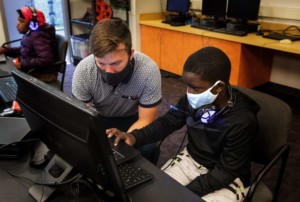
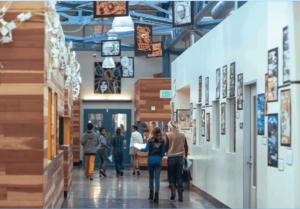
Ankita
Thanks for sharing such valuable information. Your perspective is refreshing and has given me a lot to think about. Top Schools in Chandigarh